Abstract
The therapeutic effects produced by formulations of amoxicillin plus clavulanic acid (BRL 25 000A and BRL 25 000G) were compared with those of amoxicillin and clavulanic acid separately against a variety of infections produced by amoxicillin-susceptible and beta-lactamase-producing (amoxicillin-resistant) bacteria. The infection models studied included intraperitoneal infections, a mouse pneumonia, experimental pyelonephritis, and local lesions caused by Staphylococcus aureus and Bacteroides fragilis. The distribution of amoxicillin and clavulanic acid in infected animals after the administration of amoxicillin-clavulanic acid was evaluated by measurement of the concentrations of the substances present in specimens collected at the sites of infection. The results showed that both amoxicillin and clavulanic acid were well distributed in the animal body after the administration of amoxicillin-clavulanic acid formulations, being present in significant concentrations at various sites of infection, e.g., peritoneal washings, pleural fluid, pus, and infected tissue homogenates. In a number of cases, the amoxicillin concentrations measured after the administration of BRL 25000 were higher than those found after treatment with amoxicillin alone, presumably as a result of inhibition of bacterial beta-lactamases by clavulanic acid at the site of infection. The ability of clavulanic acid to protect amoxicillin in vivo was confirmed by the efficacy of amoxicillin-clavulanic acid formulations in the treatment of the infections studied, most of which were refractory to therapy with amoxicillin.
Full text
PDF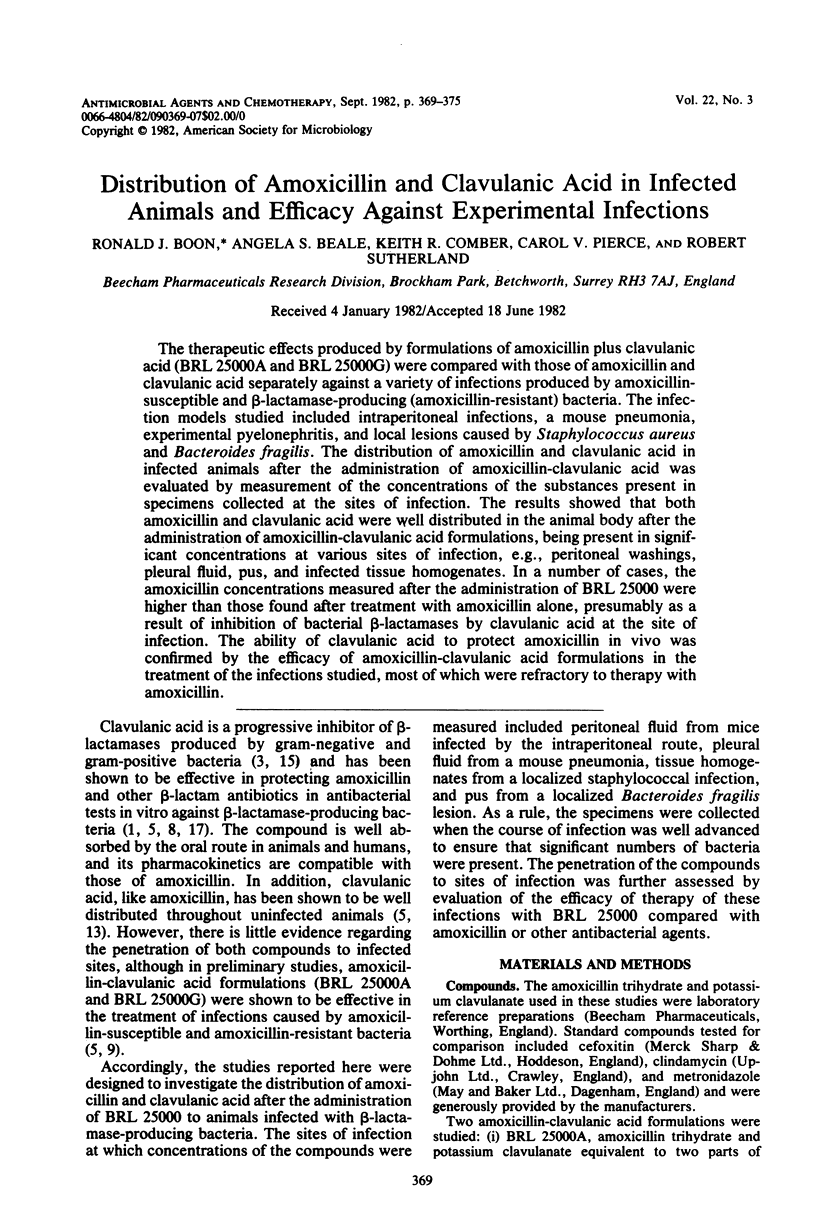
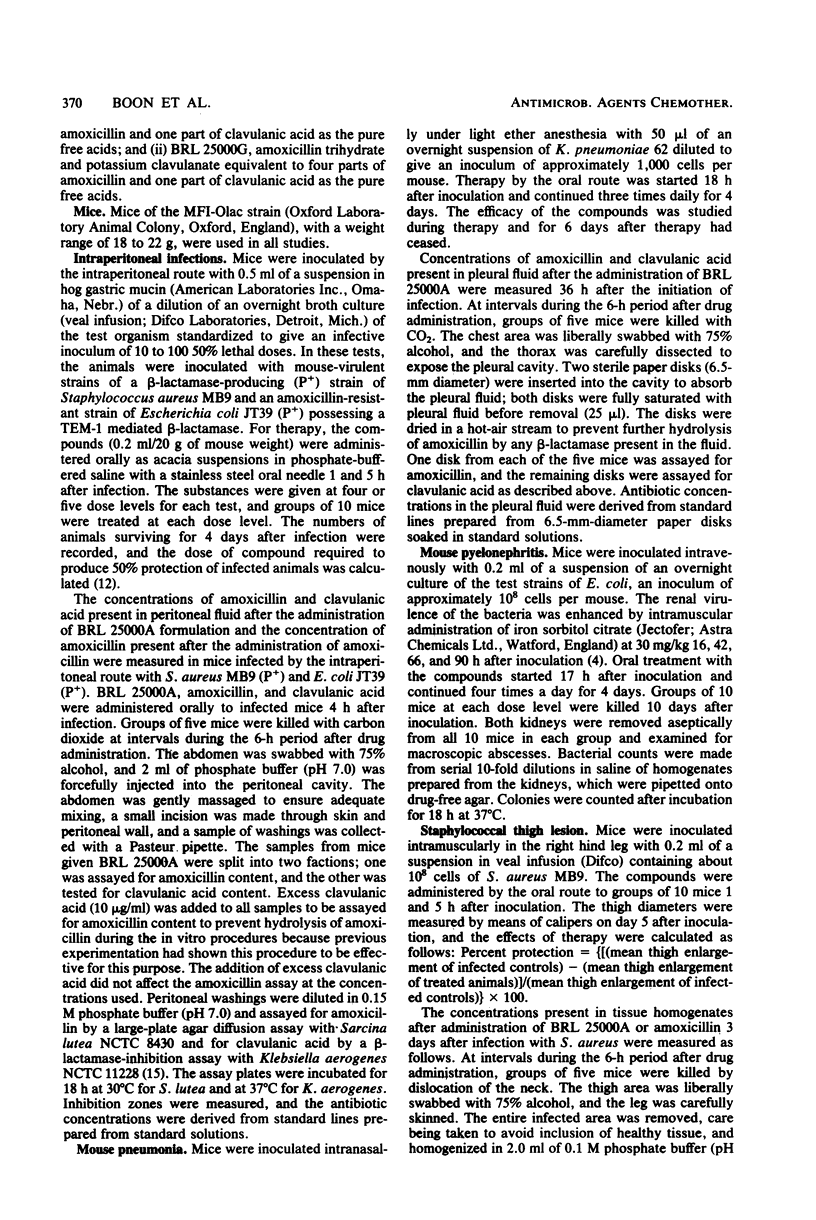

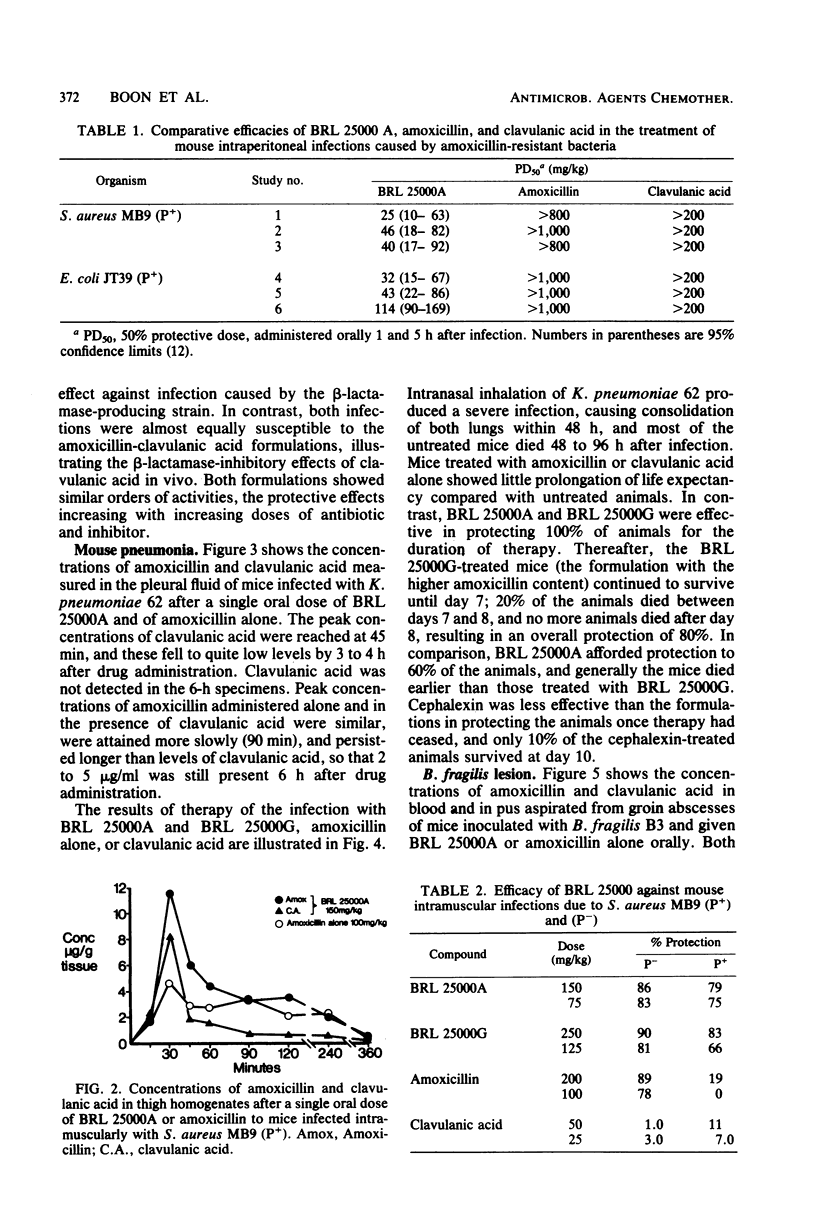
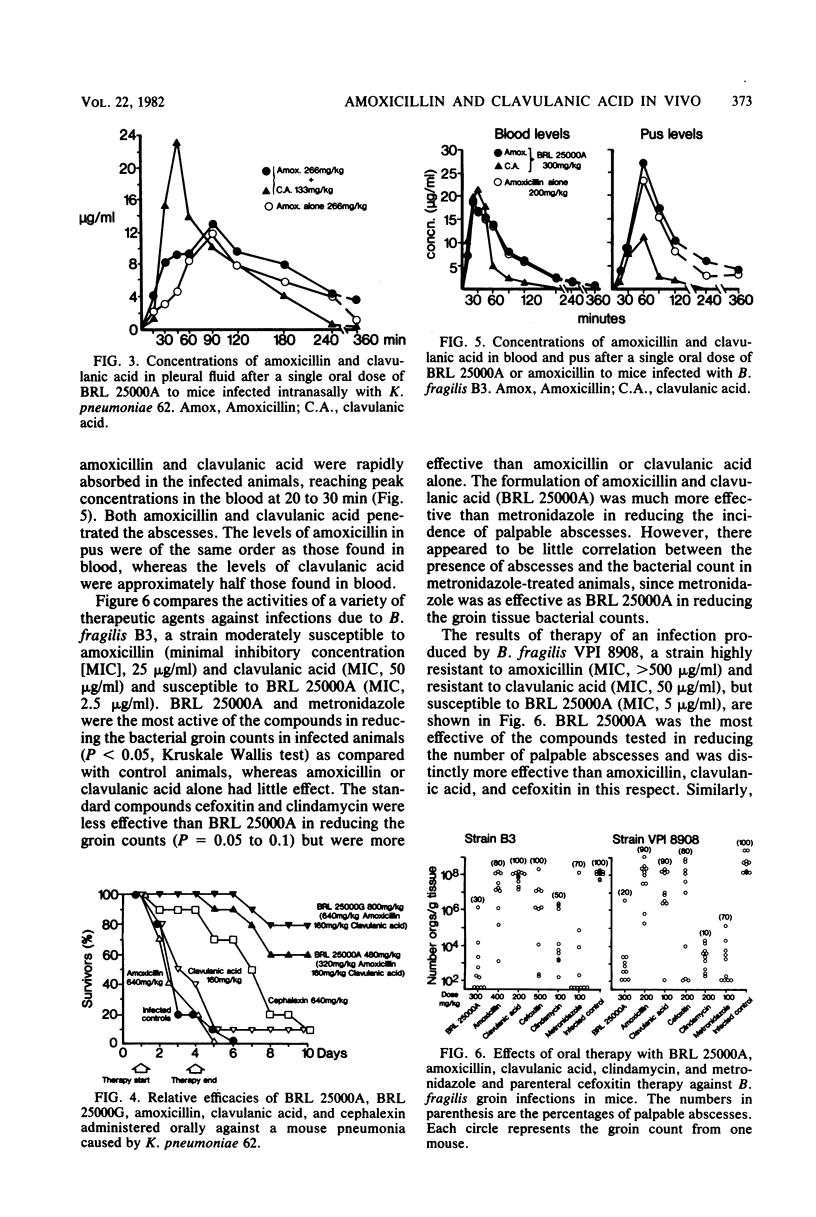

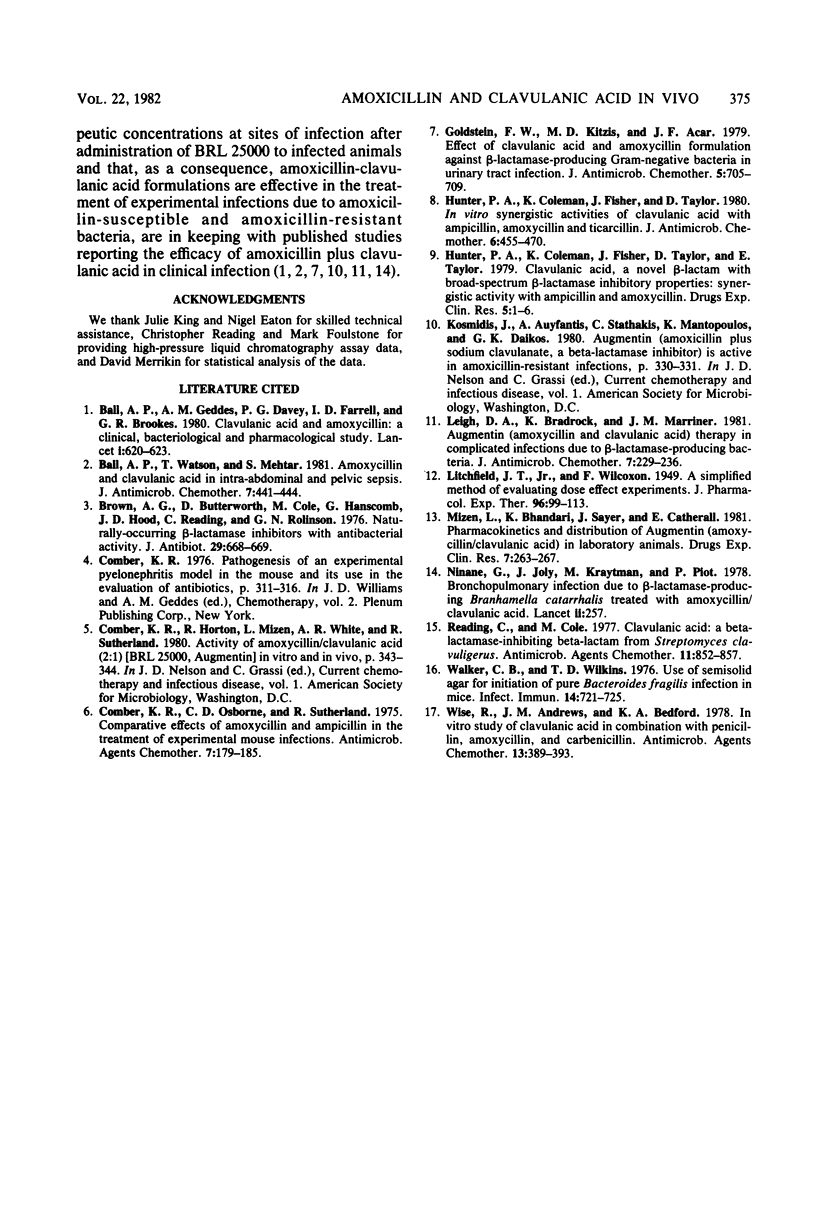
Selected References
These references are in PubMed. This may not be the complete list of references from this article.
- Ball A. P., Geddes A. M., Davey P. G., Farrell I. D., Brookes G. R. Clavulanic acid and amoxycillin: a clinical, bacteriological, and pharmacological study. Lancet. 1980 Mar 22;1(8169):620–623. doi: 10.1016/s0140-6736(80)91118-6. [DOI] [PubMed] [Google Scholar]
- Ball P., Watson T., Mehtar S. Amoxycillin and clavulanic acid in intra-abdominal and pelvic sepsis. J Antimicrob Chemother. 1981 Apr;7(4):441–444. doi: 10.1093/jac/7.4.441. [DOI] [PubMed] [Google Scholar]
- Brown A. G., Butterworth D., Cole M., Hanscomb G., Hood J. D., Reading C., Rolinson G. N. Naturally-occurring beta-lactamase inhibitors with antibacterial activity. J Antibiot (Tokyo) 1976 Jun;29(6):668–669. doi: 10.7164/antibiotics.29.668. [DOI] [PubMed] [Google Scholar]
- Comber K. R., Osborne C. D., Sutherland R. Comparative effects of amoxycillin and ampicillin in the treatment of experimental mouse infections. Antimicrob Agents Chemother. 1975 Feb;7(2):179–185. doi: 10.1128/aac.7.2.179. [DOI] [PMC free article] [PubMed] [Google Scholar]
- Goldstein F. W., Kitzis M. D., Acar J. F. Effect of clavulanic acid and amoxycillin formulation against beta-lactamase producing Gram-negative bacteria in urinary tract infections. J Antimicrob Chemother. 1979 Nov;5(6):705–709. doi: 10.1093/jac/5.6.705. [DOI] [PubMed] [Google Scholar]
- Hunter P. A., Coleman K., Fisher J., Taylor D. In vitro synergistic properties of clavulanic acid, with ampicillin, amoxycillin and ticarcillin. J Antimicrob Chemother. 1980 Jul;6(4):455–470. doi: 10.1093/jac/6.4.455. [DOI] [PubMed] [Google Scholar]
- Leigh D. A., Bradnock K., Marriner J. M. Augmentin (amoxycillin and clavulanic acid) therapy in complicated infections due to beta-lactamase producing bacteria. J Antimicrob Chemother. 1981 Mar;7(3):229–236. doi: 10.1093/jac/7.3.229. [DOI] [PubMed] [Google Scholar]
- Ninane G., Joly J., Kraytman M., Piot P. Bronchopulmonary infection due to beta-lactamase-producing Branhamella catarrhalis treated with amoxycillin/clavulanic-acid. Lancet. 1978 Jul 29;2(8083):257–257. doi: 10.1016/s0140-6736(78)91763-4. [DOI] [PubMed] [Google Scholar]
- Reading C., Cole M. Clavulanic acid: a beta-lactamase-inhiting beta-lactam from Streptomyces clavuligerus. Antimicrob Agents Chemother. 1977 May;11(5):852–857. doi: 10.1128/aac.11.5.852. [DOI] [PMC free article] [PubMed] [Google Scholar]
- Walker C. B., Wilkins T. D. Use of semisolid agar from initiation of pure Bacteroides fragilis infection in mice. Infect Immun. 1976 Sep;14(3):721–725. doi: 10.1128/iai.14.3.721-725.1976. [DOI] [PMC free article] [PubMed] [Google Scholar]
- Wise R., Andrews J. M., Bedford K. A. In vitro study of clavulanic acid in combination with penicillin, amoxycillin, and carbenicillin. Antimicrob Agents Chemother. 1978 Mar;13(3):389–393. doi: 10.1128/aac.13.3.389. [DOI] [PMC free article] [PubMed] [Google Scholar]


